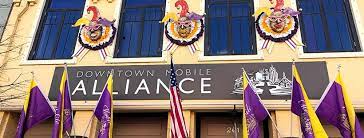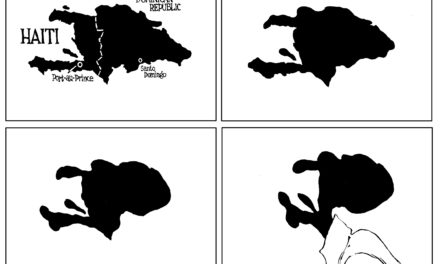Memphian and nationally respected urban expert Carol Coletta, now president of Memphis River Parks Partnership, was a keynote speaker at the annual meeting of the Downtown Mobile Alliance September 25, 2021. Her comments are reprinted here because of their insights and relevance for all downtowns, including Memphis:
I’m so glad to be here. Aren’t you?
Eighteen months ago, that would have been a throw-away opening, right? I’m so glad to be here. But now? Not so much.
In fact, that may be the most critical question looming for downtowns everywhere: What is it that will make people glad to be here?
Because in the midst of the pandemic, many of us have taken the opportunity to re-think how and where we want to live. Many, especially those working in industries with low pay and uncertainty, have decided to change jobs, switch industries or simply stay home.
And for a growing number of office workers, the office is no longer the place you spend five of seven days a week.
When you have the option of staying home to work – or not work, as the case may be – your home, your neighborhood, your city, your local ties become all-important.
We’ve known for a long time that when it comes to capturing mobile, college-educated 25-34 year-olds – what we called “the young and restless” — quality of life is a city’s most valuable asset. As I heard in many focus groups with this demographic, first, they choose the place they want to live, then they look for a job.
Fifteen years later, place is even more divorced from certain choices. You can now live local and shop global. Many of us can also work global.
My two stepsons fit this mold. One lives in Boston and is a senior executive with a west coast firm he never visited before he was hired more than a year ago. The other son works for digital security firm based on DC who runs a team spread all over the country from his new home in Montana.
The young and restless now look like an indicator species because many of us are following in their footsteps. In our self-exploration, we are taking big leaps into the unknown at every stage of life, not just at the beginning of our work lives and once our work lives are over.
Estimates now are that 22 percent of the workforce will work remotely fulltime in the next decade. But many more will have the option of working remotely part-time.
Now more than ever, quality of life is a city’s best economic development asset.
What a fascinating and challenging time to be reconsidering the role of downtown.
Downtowns are their cities’ first neighborhoods and often their most unique. They serve as the center of government and are typically significant jobs centers. It’s hard to find a city where the downtown residential population is not growing. And downtown is most often where you find a city’s entertainment and tourism hub.
In fact, many tourists never experience any part of the city other than downtown.
Downtown always, always has an outsize impact on what people think about a city – its past and its future.
So cities have a special obligation to get their downtowns right. I salute the work you are doing here in downtown Mobile.
Job one is to make this downtown a place people want to be. And you must make it more compelling than ever because the competition will only get fiercer.
So what are the qualities that make a downtown compelling?
If this downtown is to compete, you must make the most of its assets. Good strategy always calls for building on strength and difference.
For most downtowns, that includes:
- Walkability
- A great public realm that includes parks and lively streets
- Entertainment and tourism assets
- Diverse uses and people
- And for the lucky ones, a waterfront. (Mobile is one of the lucky ones.)
I list walkability first because it is a key to making – or making the most of – a lively public realm, entertainment and tourism assets, the benefits of diverse uses and people and a waterfront.
A downtown is walkable when multiple destinations are within convenient, pleasant and safe walking distance.
As someone who has lived and worked in a downtown for the past 40+, I feel like somewhat of an “expert” on the walkability of downtowns. My conclusion: It’s easy to miss all the small moves.
We prize 4 – sometimes 5 — lanes of traffic on downtown streets, when only 2 are needed. We build good sidewalks, but still allow right turns on red and swooping curb geometry so cars can take corners quickly. We try to emulate suburbs by putting parking everywhere, rather than pursuing a park-once-and-walk strategy that prioritizes making the walk between destinations delightful. We work to hurry traffic through downtown instead of slowing it down. We have great waterfront asset potential, then let too-wide roads carrying too-fast traffic separate our waterfronts from our downtowns. Likewise, we fail to connect downtown to the neighborhoods just beyond downtown, often due to historic patterns of racial segregation.
One of the world’s most glamorous cities – Paris – accelerated a nascent trend when the mayor proclaimed herself dedicated to making Paris a 15-minute city… a city, where all of your daily needs would be within 15 minutes on foot or on bike. Now, she’s a global star, and the 15-minute city is one of the hottest urban trends.
You may not be able to make Mobile a 15-minute city. But you can make downtown Mobile a 15-minute neighborhood.
The good news is that you have a head start on making your downtown walkable. Your historic fabric of buildings and narrow streets makes for an inviting walk. And in July, Jeff Speck and Nelson Nygaard delivered an important additional strategy for walkability in a document called ironically “Optimizing Downtown Streets.”
The question is: Do you have the political will to execute it?
I hope so because it describes the moves that form the foundation of the most important competitive advantage Downtown Mobile can have – its walkability. Walkability is the rocket fuel for every other potential competitive advantage.
A lively public realm begins with getting the streets right. A good public realm is both a product of and a contributor to walkability.
Last Saturday night, I unintentionally walked 4.2 miles home from a football game. Two-thirds of the walk was on a six-lane street where pedestrians have only a very small sidewalk completely unprotected from the curb. You can imagine how unpleasant that walk was.
But imagine walking that same distance in Manhattan, pre-COVID. Imagine starting at Central Park North and walking south through the park all the way to the Empire State Building. With the right shoes, you might not notice you’d been walking an hour and a half because there are so many appealing distractions – the people, the natural beauty of the park, the storefronts, the smells of food. They keep a long walk from seeming like a death march.
Now, Downtown Mobile is never going to be Manhattan. It doesn’t need to be. You just need to keep people interested for a dozen or so blocks. Pick out the key routes through downtown, locate the places that make a walk effortless and enjoyable, study them so you can make more of them, then fill in the gaps.
Obviously, COVID hit storefront retail very hard. We probably all have a favorite shop or restaurant that is still closed – maybe gone forever. With home delivery flourishing, there is no doubt that Main Streets will need to be reinvented. While the lack of office workers and tourists has seriously wounded the downtown street scene, longer-term, the smaller footprints of downtown shops and restaurants ought to be an advantage for creative entrepreneurs and people who want to test new concepts. Remember that for the past decade or so, department stores are barely hanging on, chain stores are consolidating their operations, and shopping malls have closed. The pandemic just accelerated these trends.
Right now, we need to be especially creative about how we make downtown feel lively. I believe it probably calls for three moves:
- Fake it till you make it, by filling storefront and streets with pop-up activity, concentrated in both time and space to make streetlife more visible and exciting.
- Two, Invest in alluring parks and other public gathering places. Invest in great design and animation of these spaces. Don’t be afraid to break the mold on what Americans think of as parks.
- And three, Keep it clean and civil. One of the most disturbing things about the pandemic is the extent to which cities – often woefully understaffed during COVID — have let bad behavior take root on our streets.
It’s easy to overlook the small moves we can make to make our downtowns more vibrant, because so often, we focus on the silver bullets – the glamour projects – we believe will make downtown successful. Too often, though, once the newness has worn off projects with very specific, very defined programs, we’re left trying to figure out how to recapture the initial shine and attendance.
I’m not suggesting a downtown never needs a glamour project. We’re building one right now in Memphis – Tom Lee Park on our riverfront. But unless, in our case, we delightfully connect the Memphis riverfront north and south up and down the Mississippi river bank and then east and west to downtown and the neighborhood beyond, we will not realize the benefit of our investment.
Speaking of waterfronts…. In the right hands, a waterfront is a slam dunk of an investment. It’s an asset not every city has. You’re lucky. You have a waterfront. If you elevate the visitor experience with great design, a great program and great management of the public realm, connect it to downtown and welcome everybody, you will have a very powerful lure for your downtown.
In a city like Mobile (or Memphis), we can’t afford to have stranded assets. We have to put all of our assets to work.
That means joining them all up.. connecting them.. making it easy and appealing to walk and bike between destinations.
At Memphis River Parks Partnership, we believe we can’t have a successful riverfront without a successful downtown. And without a successful downtown, we can’t have a successful city.
It also works in reverse: A successful waterfront helps make a downtown and a city successful.
Cities all over the world are rediscovering their waterfronts, now that their former industrial uses are waning. Waterfronts are people magnets, and it’s so exciting to see.
Let me make one more critical point about the natural advantages of downtown. In an America that is increasingly distrustful, the mixing of uses and people that naturally occurs in downtown – is expected.. even embraced. And that mixing is fundamental to healthy communities and healthy democracies. As blues artist Keb Mo put it, “You can’t feel ‘em if you can’t see ‘em.” Because it is increasingly hard to “see” people who live different lives than our own, downtown – as a community’s common ground – plays an outsize role in building trust and equity in a city.
If you can capitalize on the full package of natural downtown assets – walkability, an active public realm, entertainment and tourism assets, mixing uses and people and your waterfront — your downtown will be competitive. It will be the kind of place people want to be. And creating a place people want to be has never been more crucial because our options about where to live have never greater.
Some people are asserting the pandemic has made living and working in cities less desirable. But the most powerful–and un-contradicted—bits of evidence that cities are still in demand are the increasing prices that people are paying to live in central locations and walkable neighborhoods.
As urban economist Joe Cortright has noted, the epitaph of cities has been written many times. We were told that in the wake of 9/11 no one would want to live in dense areas for fear of terrorist attacks. We were told that the advent of the Internet and shopping would allow people to forego traveling to cities for jobs and goods, but the back to the city movement has flourished and accelerated coincident with the widespread adoption of these technologies.
Once again, we’re being told that a new fear will drive people to the suburbs or rural towns. But the experience of the last few months has shown us that, while people may be switching cities, they are still moving to cities.
I look around Mobile, and it feels like you have all the ingredients you need – including some great advice from past speakers at this occasion – to take advantage of this moment. But it takes courage to do something different… to venture into the unfamiliar… to take what at first may be unpopular actions. I know. I have the scars to prove it. In a world where social media reins, it can be pretty tough to do big things.
But there is no better time to do the right thing. And the right thing to do in downtown Mobile is obvious:
* Make it walkable.
* Create lively streets and parks.
* Keep building your entertainment and visitor assets
* Mix uses and people
* Recapture your waterfront and make the most of it.
Thank you for all you have done –and will do – for downtown, and I look forward to exciting things for Downtown Mobile.





